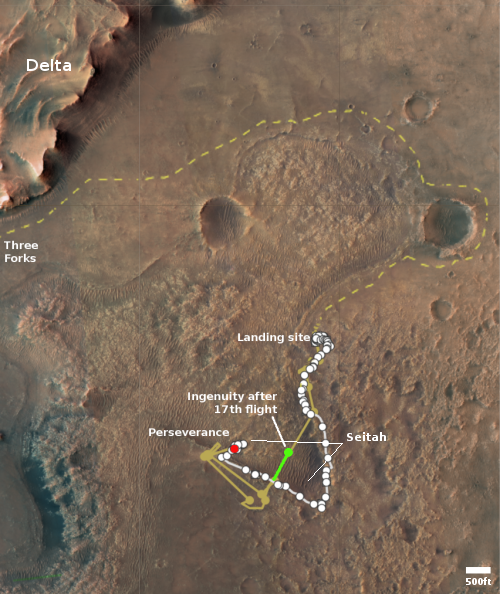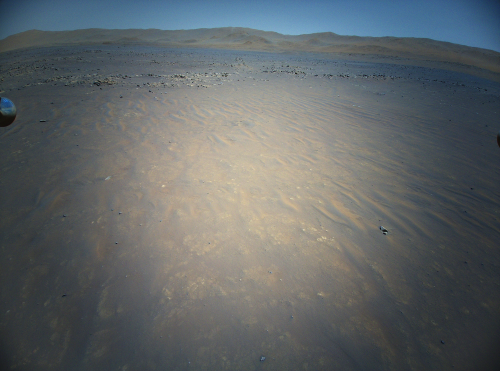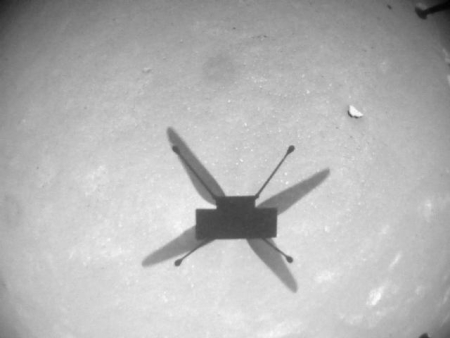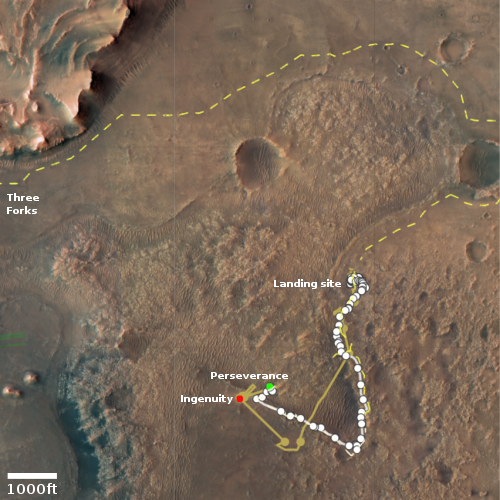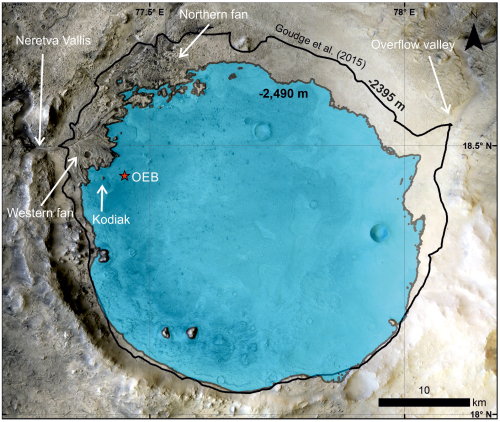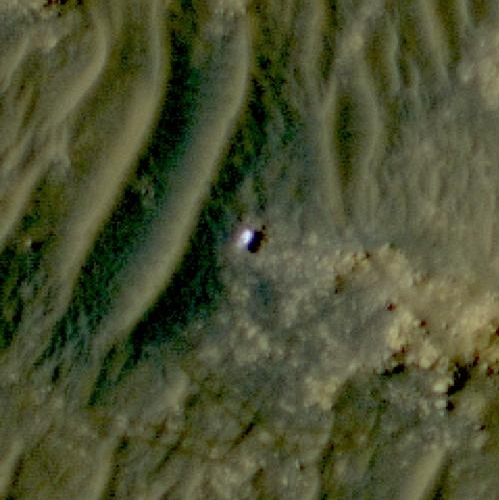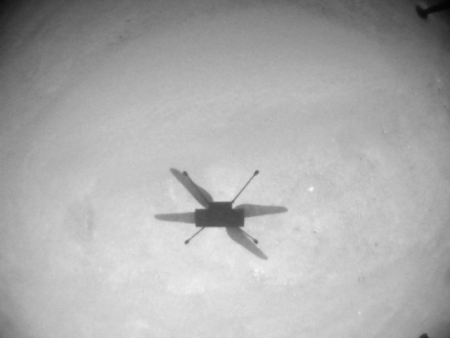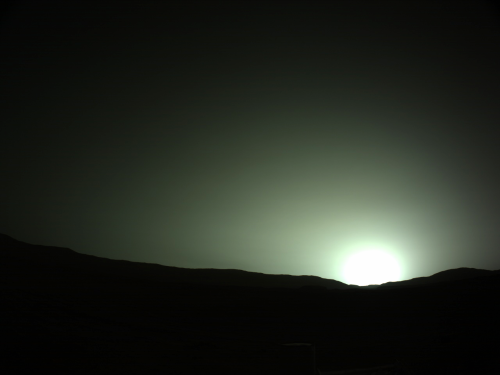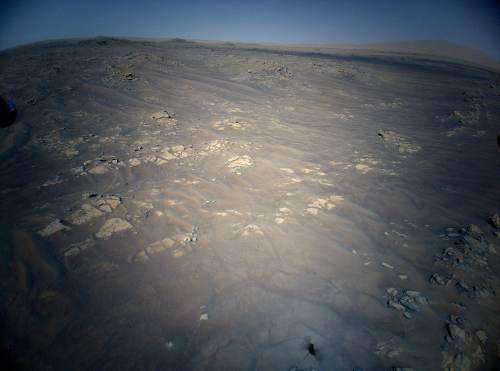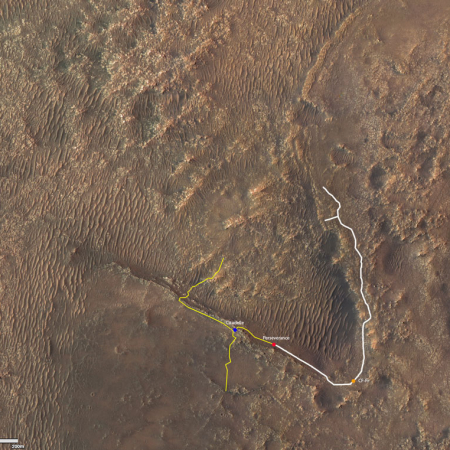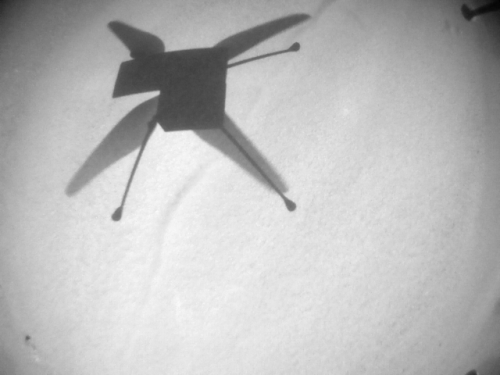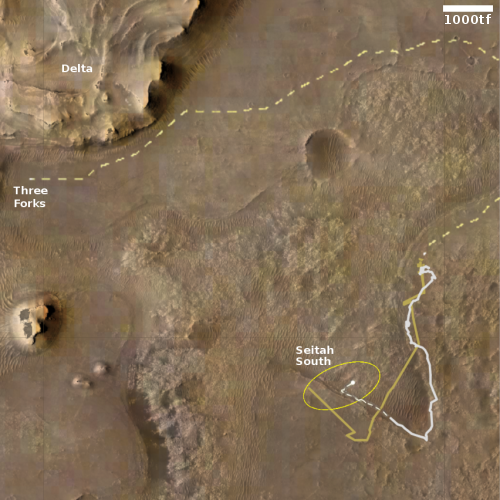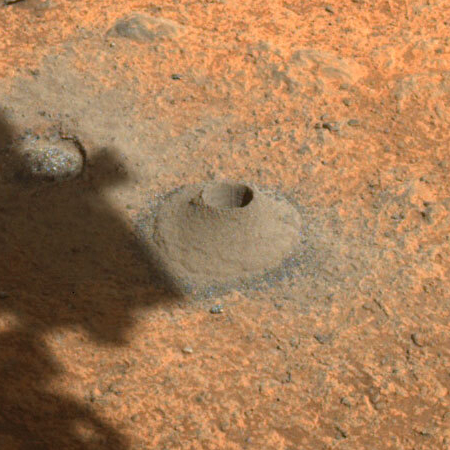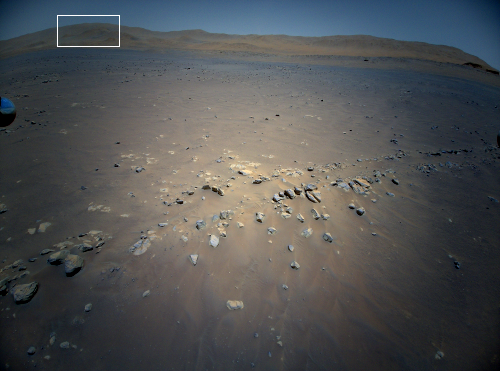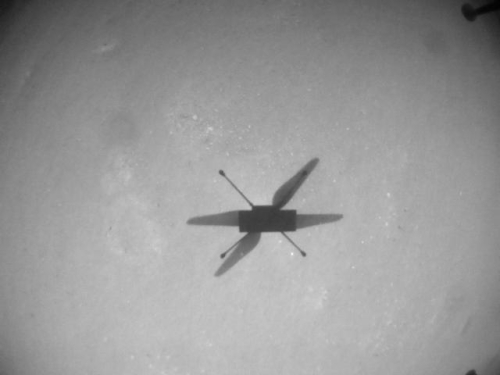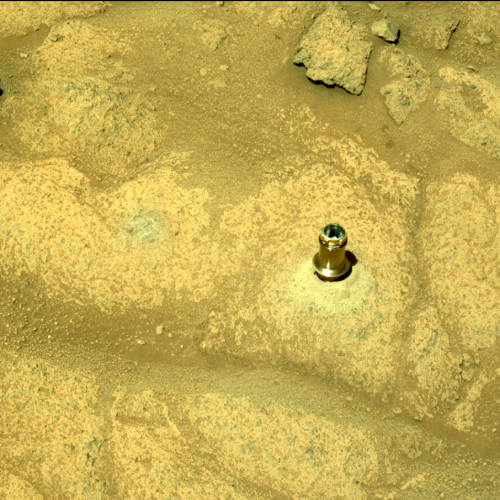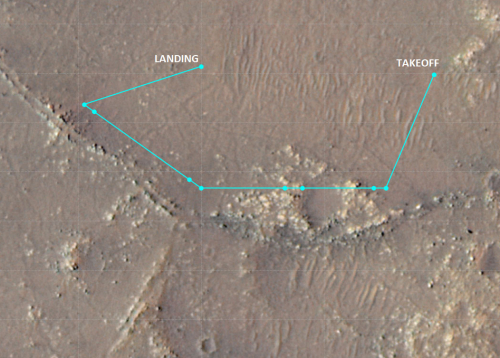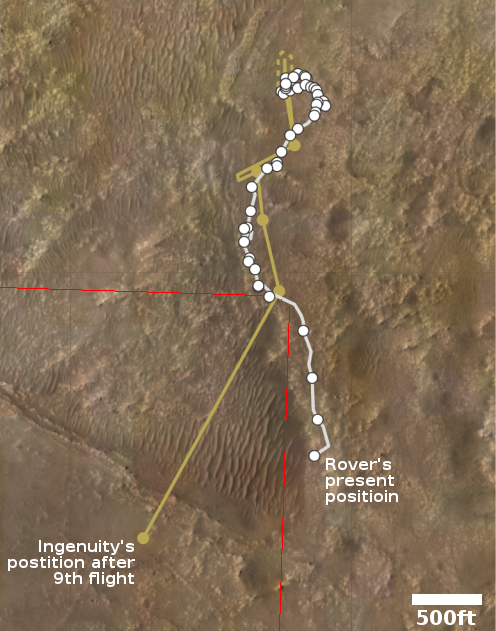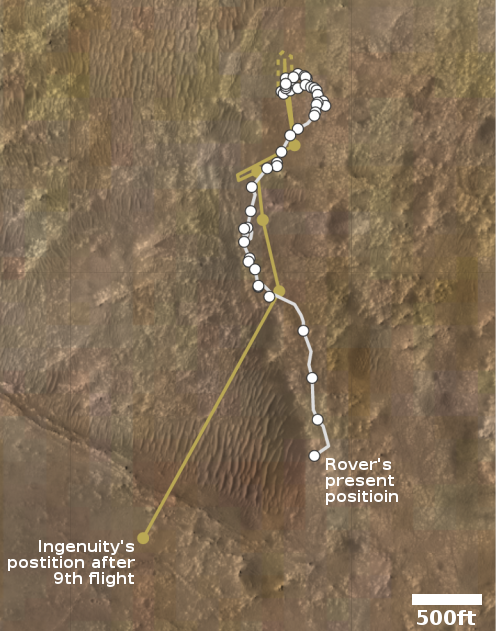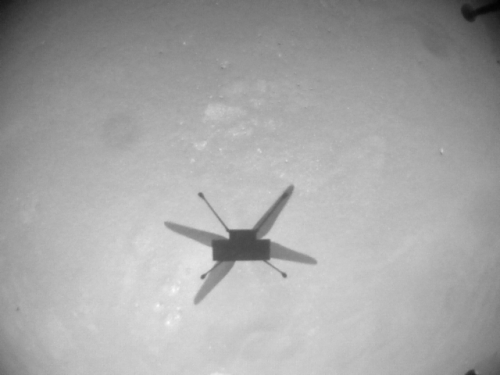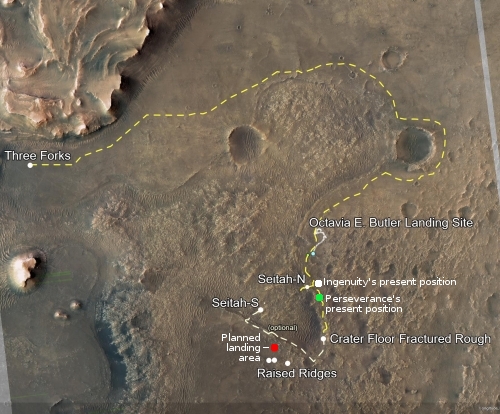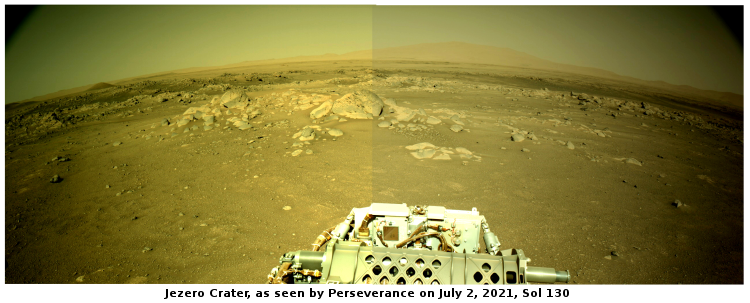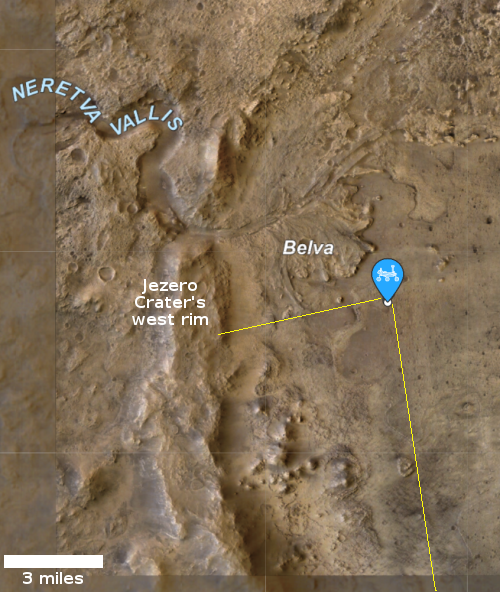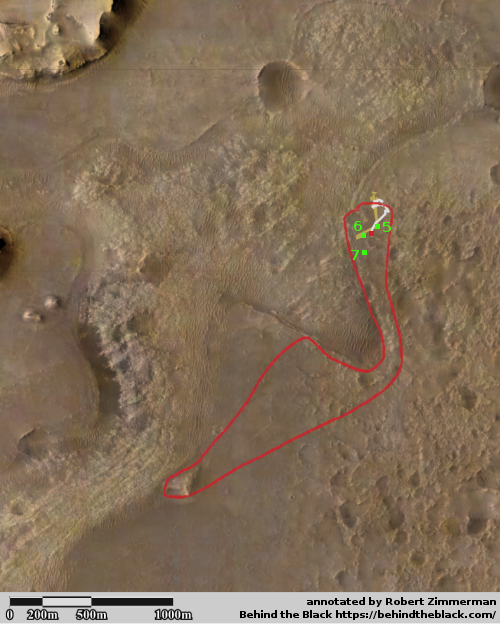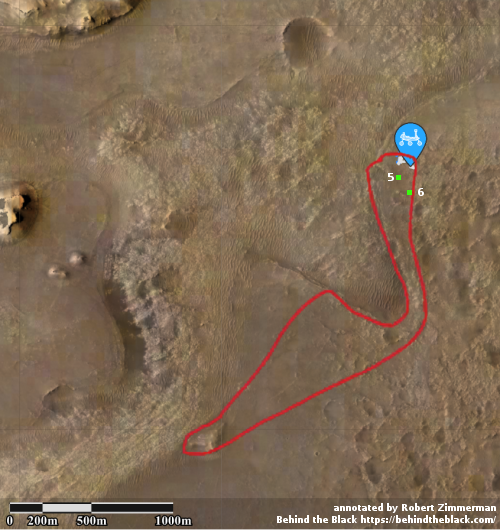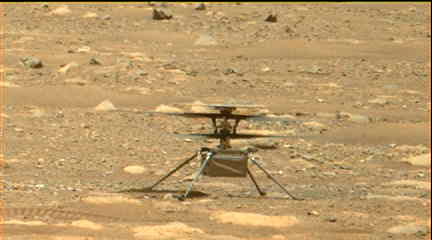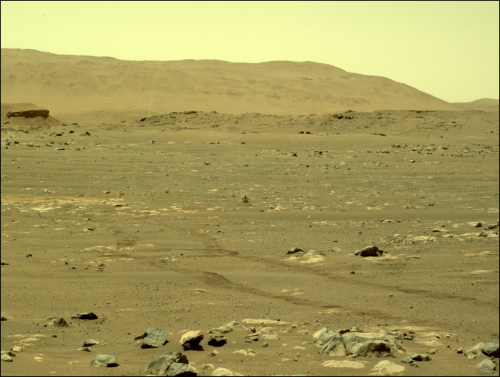Perseverance scientists: First volcanics then water in Jezero Crater
On December 15th the Perseverance science team presented a summary of the rover’s first nine months exploring the floor of Jezero Crater, finding evidence first of volcanic lava activity followed by several periods where water covered the these same rocks.
“These rocks that we originally thought might be sedimentary rocks, these are in fact igneous [volcanic] rocks,” said Kelsey Moore at the California Institute of Technology (Caltech). “And even more excitingly, they’re not just igneous rocks – there’s more history to the story.”
The analysis of the rocks’ compositions revealed minerals that are generally produced by interactions between water and rock, as well as traces of two different salts that were probably left behind as salty water flowed through the cracks and pores in the volcanic rock.
The variety of minerals indicates that these rocks were probably underwater at least twice. “Two different types of liquid with two different types of chemistries points towards two different episodes of liquid water interaction,” said Eva Scheller, also at Caltech.
It seems strange that the scientists were surprised that Jezero Crater has a history of volcanic activity. Most craters when formed have what is called impact melt in their crater interior. The impact not only carves out the crater, the heat of impact melts the rock. Possibly the scientists expected such impact melt to be well buried and not accessible to Perseverance.
Regardless, this data will be used as the baseline for documenting the geological history of this region on Mars as Perseverance continues its journey across the floor of the crater, up onto the delta, and then out of the crater into the uplands beyond.
On December 15th the Perseverance science team presented a summary of the rover’s first nine months exploring the floor of Jezero Crater, finding evidence first of volcanic lava activity followed by several periods where water covered the these same rocks.
“These rocks that we originally thought might be sedimentary rocks, these are in fact igneous [volcanic] rocks,” said Kelsey Moore at the California Institute of Technology (Caltech). “And even more excitingly, they’re not just igneous rocks – there’s more history to the story.”
The analysis of the rocks’ compositions revealed minerals that are generally produced by interactions between water and rock, as well as traces of two different salts that were probably left behind as salty water flowed through the cracks and pores in the volcanic rock.
The variety of minerals indicates that these rocks were probably underwater at least twice. “Two different types of liquid with two different types of chemistries points towards two different episodes of liquid water interaction,” said Eva Scheller, also at Caltech.
It seems strange that the scientists were surprised that Jezero Crater has a history of volcanic activity. Most craters when formed have what is called impact melt in their crater interior. The impact not only carves out the crater, the heat of impact melts the rock. Possibly the scientists expected such impact melt to be well buried and not accessible to Perseverance.
Regardless, this data will be used as the baseline for documenting the geological history of this region on Mars as Perseverance continues its journey across the floor of the crater, up onto the delta, and then out of the crater into the uplands beyond.

